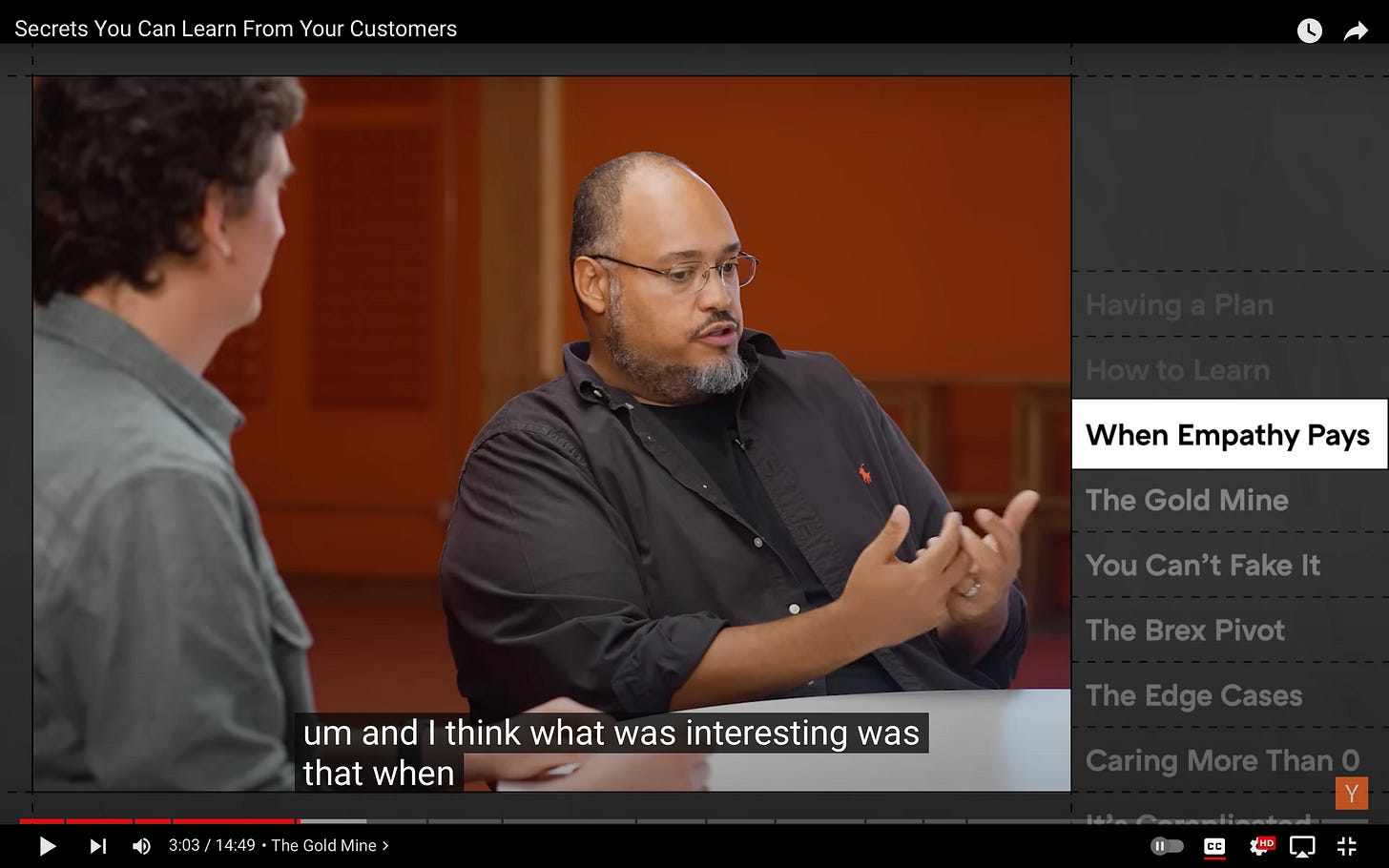The newest Content Marketing is Dead podcast episode is live! Listen on Spotify, Apple Podcasts, or wherever you listen to podcasts.
B2B businesses have been slow to adopt video content as a core part of their marketing strategy.
"Every company by now has made an explainer video," Josef Newton explained. "But the number of companies that have actually adopted it as consistent part [of their marketing strategy] — it's tiny."
And those that are using video content aren't necessarily doing so in a sustainable way. “A lot of the time the goal is to make things that just look sexy and cool rather than things that actually get consumed,” he said.
These are two of the reasons that Josef and his cofounder Sergey Ross started Sway, a B2B video strategy and production company. “Our goal was to help companies consistently ship out video content that gets consumed. That’s the number one objective.”
I spoke to Josef (or Joe) about B2B video strategies. Listen to the full episode for best practices on video usability, utilizing TikTok, finding the right interview clips to use on LinkedIn, and more.
Below are highlights from the episode: Seven reasons why B2B video strategies tend to fail.
1. Your Video Production Isn’t Integrated Into Your Overall Marketing Strategy
“A lot of video gets created in its own expensive isolation,” Joe explains. “It's not connected to the rest of the written content engine: your blog, your case studies.”
This is a theme that keeps coming up again and again on this podcast: the siloing of marketing functions. When components of your marketing strategy (such as video and written content) are created separately, the result is missed opportunities and a disjointed brand.
2. The Wrong People Are Creating Your Videos
Per Joe, there’s a ton of amazing talent in the B2B space around written content, but significantly less talent that has a true video marketing background.
“There's a lot of video production people, but not necessarily people who understand how to make videos for YouTube, TikTok — these social channels and platforms,” Joe explains.
Video specialists need to understand what kinds of content work on different platforms and in your market.
If you don’t have internal talent that is well-versed in B2B video marketing, there are a couple of options. One is utilizing companies like Sway that specialize in this exact thing.
The other is recognizing that whatever content your team produces is going to be an experiment, so prioritize testing. Try out different video formats and lengths. Try out different topics. Track everything and iterate quickly.
3. You’re Not Balancing Sustainability and Quality
A lot of the B2B video content that exists today is filmed in person, and it’s unsustainable. While it’s great to get as much in-person content as you can, it probably shouldn’t be the majority of your video strategy.
When companies look for a positive ROI from costly footage and don’t find it, it can be super tempting to just give up on a video strategy altogether instead of trying different, more sustainable approaches.
What I've found is that a B2B audience isn't looking for high production value — they're looking for insights to grow their businesses or careers; they're looking for an explanation of how to use a product; they're looking for reasons to keep their eye on a company.
Instead of spending thousands getting in-person footage, invest in video usability and strategy. Things like video SEO and utilizing easy-to-create videos throughout the customer journey.
4. You’re Expecting Videos To Be Directly Tied to Conversions
There are cases when videos can be directly tied to conversions, such as outbound Loom videos from your sales reps, or personalized videos used in an account-based marketing approach. All of this can be extremely effective.
But when you're using videos as part of an organic social media approach, it's much more difficult (and beside the point) to try and track the conversion rates of videos.
When utilizing videos on social — especially newer channels like TikTok, a better perspective is to think about how to create an engaged community.
"It's like insanely cheap brand awareness is how I see it," Joe explained.
You’re Not Changing Your Strategy to Increase Engagement
Video engagement is one of the best ways to tell if something is working.
On YouTube, Joe recommends looking at overall subscriber growth from month to month and longer watch times. Ideally, you want to increase video retention to average between 30% to 60%.
He also recommends looking for an increase in thoughtful comments:
Are they leaving interesting comments? It's not people just saying, ‘Great video,’ and that's it. It's like people are talking about something that was said in the video.
That’s a good sign that your video content is onto something memorable.
These are good metrics to use across social platforms. Are people watching the entire 30 to 90-second clip on LinkedIn or TikTok? Are they responding to them or sharing them? You’re on your way to building a loyal online following.
(Chili Piper’s TikTok account is making waves for covering remote work culture and other workplace topics.)
5. Your Videos Aren’t Accessible
“A mindset that I'd call out is: you want to make your videos as easy to consume as your text,” Joe recommended.
Video accessibility isn’t just about captions. For instance, if you’re using longer videos, and they’re not broken up into chapters or have easy-to-find key timestamps, it makes it more difficult to consume your videos in a meaningful way. This will help with video SEO, as well.
Joe mentioned Y Combinator as a brand that creates viewer-friendly videos.
Y Combinator uses a variety of methods to help viewers navigate their videos, including in-video outlines.
Another aspect of video accessibility is how well it's integrated into your other marketing assets, such as blog posts. For instance, if you have an in-depth blog post, Joe recommends pairing it up with a video with timestamps that match the main points of the post.
7. You're Limiting Video Content to Certain Parts of the Sales Funnel
From product launch videos to how-to videos to video case studies, there are video buckets that can be used across the sale funnel and beyond.
"It surprises me how many companies don't create case study videos," Joe said. "I think again because there's that perception that they need to be done in person with really expensive equipment, and that's why they don't get created. But doing case studies remotely is not that difficult. And I think that's where a lot of companies should start."
Looking for a better video strategy and help with video production? Reach out to Sway.
Looking for a more cohesive marketing strategy that includes video content? Let's chat.












